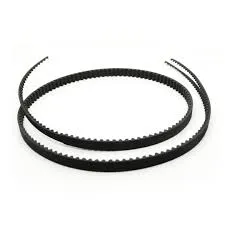- Arabic
- French
- Russian
- Spanish
- Portuguese
- Turkish
- Armenian
- English
- Albanian
- Amharic
- Azerbaijani
- Basque
- Belarusian
- Bengali
- Bosnian
- Bulgarian
- Catalan
- Cebuano
- Corsican
- Croatian
- Czech
- Danish
- Dutch
- Afrikaans
- Esperanto
- Estonian
- Finnish
- Frisian
- Galician
- Georgian
- German
- Greek
- Gujarati
- Haitian Creole
- hausa
- hawaiian
- Hebrew
- Hindi
- Miao
- Hungarian
- Icelandic
- igbo
- Indonesian
- irish
- Italian
- Japanese
- Javanese
- Kannada
- kazakh
- Khmer
- Rwandese
- Korean
- Kurdish
- Kyrgyz
- Lao
- Latin
- Latvian
- Lithuanian
- Luxembourgish
- Macedonian
- Malgashi
- Malay
- Malayalam
- Maltese
- Maori
- Marathi
- Mongolian
- Myanmar
- Nepali
- Norwegian
- Norwegian
- Occitan
- Pashto
- Persian
- Polish
- Punjabi
- Romanian
- Samoan
- Scottish Gaelic
- Serbian
- Sesotho
- Shona
- Sindhi
- Sinhala
- Slovak
- Slovenian
- Somali
- Sundanese
- Swahili
- Swedish
- Tagalog
- Tajik
- Tamil
- Tatar
- Telugu
- Thai
- Turkmen
- Ukrainian
- Urdu
- Uighur
- Uzbek
- Vietnamese
- Welsh
- Bantu
- Yiddish
- Yoruba
- Zulu
Dec . 29, 2024 06:37 Back to list
Understanding the Importance and Maintenance of Your Serpentine Belt in Vehicles
Understanding the Serpentine Belt Function, Maintenance, and Replacement
The serpentine belt, also known as the multi-vee or poly-v belt, is a critical component in modern automotive engine systems. Its primary function is to drive multiple accessories from a single belt in an efficient manner. Unlike older vehicles that used multiple belts for different functions, the serpentine belt streamlines this process, allowing for optimized performance and reduced engine weight.
Functionality of the Serpentine Belt
Typically, the serpentine belt powers various engine accessories, including the alternator, power steering pump, water pump, air conditioning compressor, and, in some cases, even the engine’s cooling fan. The belt wraps around a series of pulleys on these components and is driven by the engine’s crankshaft. As the crankshaft rotates, it turns the serpentine belt, which in turn powers the attached accessories.
One of the key advantages of the serpentine belt system is its simplicity. A single serpentine belt replaces multiple belts, reducing the complexity of the engine's configuration. This results in lighter weight and less friction, ultimately enhancing fuel efficiency. Additionally, many serpentine belts feature a self-tensioning mechanism, which means that they can adjust automatically to account for wear and stretching, eliminating the need for frequent manual adjustments.
Signs of Wear and Tear
Despite their advantages, serpentine belts are not immune to wear and tear. Over time, they may develop cracks, fraying, or glazing. Drivers should be vigilant for signs of a failing serpentine belt, including
1. Squeaking or Chirping Noises If you hear a high-pitched sound coming from the engine compartment, it could indicate that the belt is slipping or has become misaligned.
serpentine belt

3. Overheating A failed serpentine belt can also affect the water pump, leading to engine overheating.
4. Battery Warning Light If the alternator is not receiving power because of a defective belt, the battery warning light on your dashboard may illuminate.
5. Visible Cracks and Wear During routine maintenance, inspecting the belt for visible signs of damage is crucial.
Maintenance and Replacement
Regular maintenance is essential to ensure the longevity of the serpentine belt. Most vehicle manufacturers recommend inspecting the belt at least once a year or every 15,000 to 20,000 miles. During this inspection, mechanics will check for any cracks, frays, or signs of glazing.
If a serpentine belt shows signs of wear, it is usually best to replace it as a preventive measure. A standard serpentine belt can last anywhere from 50,000 to 100,000 miles, but this lifespan can vary depending on driving conditions and environmental factors. High temperatures, humidity, and exposure to oil can accelerate wear.
Replacing a serpentine belt is generally a straightforward process. Many DIY enthusiasts can perform this task with basic tools, but it often requires some knowledge of the engine layout and the belt routing diagram. In cases where the belt is difficult to access, it may be necessary to seek the help of a professional mechanic.
Conclusion
In conclusion, the serpentine belt is a vital component of your vehicle's engine system, playing a crucial role in powering various accessories. Regular maintenance and timely replacement are essential to ensure optimal performance and prevent potential damages to your vehicle. By being aware of the signs of wear and understanding the importance of this belt, drivers can keep their vehicles running smoothly and efficiently, avoiding the complications that can arise from a neglected serpentine belt. Keeping an eye on this critical part can lead to a more reliable and enjoyable driving experience.
-
Korean Auto Parts Timing Belt 24312-37500 For Hyundai/Kia
NewsMar.07,2025
-
7PK2300 90916-T2024 RIBBED BELT POLY V BELT PK BELT
NewsMar.07,2025
-
Chinese Auto Belt Factory 310-2M-22 For BMW/Mercedes-Benz
NewsMar.07,2025
-
Chinese Auto Belt Factory 310-2M-22 For BMW/Mercedes-Benz
NewsMar.07,2025
-
90916-02660 PK Belt 6PK1680 For Toyota
NewsMar.07,2025
-
drive belt serpentine belt
NewsMar.07,2025

